Sony WF-1000XM3 review: Simply the best true wireless earbuds
As a bonus, they cost well under $300.
Sony is no stranger to the true wireless-earbud craze. The company introduced the WF-1000X almost two years ago and followed with the WF-SP700N in 2018. However, even with that experience, Sony hasn't really seemed to hit its stride. There are always issues holding the products back from making the leap. Sony has perfected its over-ear noise-canceling headphones, the WH-1000XM3, and now it's leveraging some of that technology to improve its true wireless buds. Enter the $230 WF-1000XM3, Sony's best true-wireless product and a new contender for the top spot overall.
From the start, Sony's 1000X line of noise-canceling headphones have combined best-in-class ANC (active noise cancellation) with stellar sound. Sure, Bose owned the noise-canceling headphone space for years but as good as the QuietComfort series is, the audio isn't on the same level as the competition. Sony managed a complete package, and the two models since have only gotten better. So it only makes sense that the company would turn to its1000X headphone tech to improve its true-wireless offerings.
Most notably, the WF-1000XM3 earbuds have a more efficient version of Sony's noise-canceling chip: the QN1e. The component not only does a better job of blocking out the world around you, but it also needs less power to do so. The powerful ANC here does wonders for improving the overall sound. Don't get me wrong, the WF-1000XM3 sounds great in both Ambient Sound mode and with noise-canceling turned off. However, it's with the ANC enabled they really shine. Before now, Sennheiser's Momentum True Wireless earbuds offered the best overall sound. But to me, Sony has taken that crown. And it's thanks in part to the WF-1000XM3's ability to help block out any background noise.
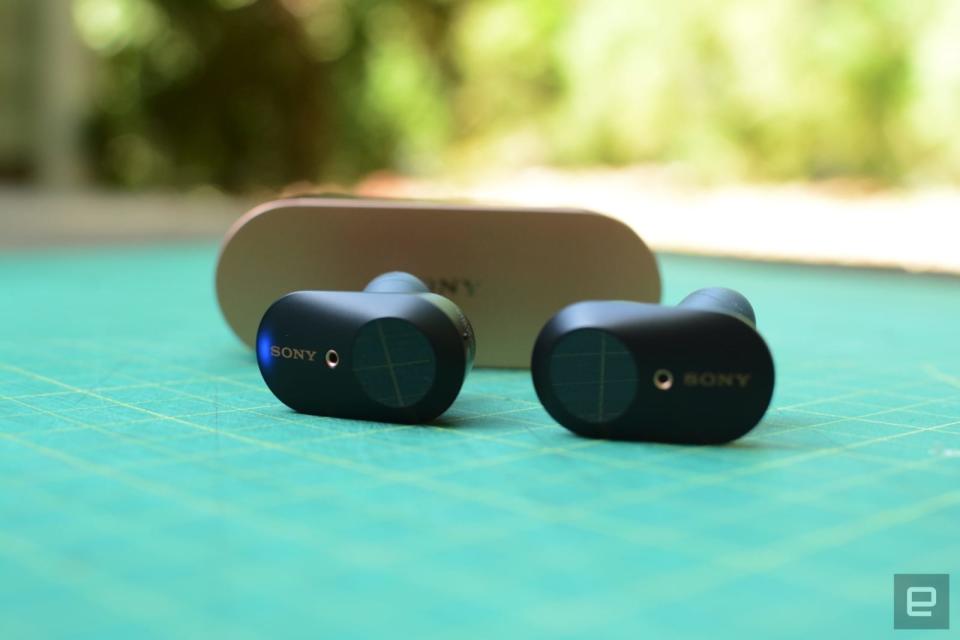
There's a lot of depth to the sound with these earbuds, which isn't always the case with true-wireless models. More often than not, the audio tends to feel flat and sound compressed. It's not an issue with noise cancellation per se, it's an issue with this kind of earbuds in general. Some companies have succeeded at creating open, airy sounding true-wireless headphones, but they typically charge $300 or more for that luxury. Not only has Sony built a soundstage that's immersive and well-tuned, it's done so for $70 less than much of the competition.
Booming bass that isn't overpowering? Check. Bright highs that offer depth but aren't distracting? You bet. Solid performance across a diverse range of genres? 100 percent. The WF-1000XM3 checks nearly every box in terms of sound quality. These earbuds really capture the openness of albums like The Appleseed Cast's The Fleeting Light of Impermanence, which is loaded with layered guitar riffs, rhythmic drum fills and spacey synths. This is exactly the style that can get compressed to a boring mess in some earbuds. But with Sony's latest, the sound stays big and airy, keeping individual drums crisp, with the guitar riffs plucked out over top instead of getting lost underneath.
Bass-heavy genres sound superb with the WF-1000XM3, too. The low-end tone is big and boomy, but it's never too much. This means the pounding heavy metal drums of Gojira's The Way of All Flesh don't drown out intricate finger tapping and other guitar riffs. It's rather chaotic music, sure, but the WF-1000XM3 keeps everything organized, and each instrument stands on its own.
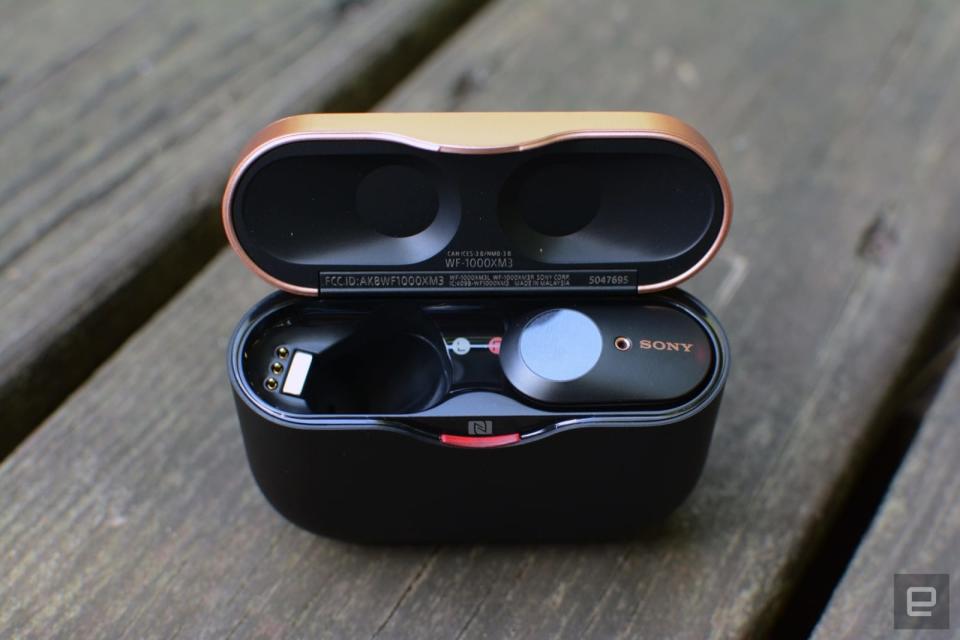
When it comes to hip-hop, these earbuds don't deliver the same thump as over-ear headphones, but they handle it better than most true-wireless options. Denzel Curry's ZUU can be a bit much for them at times, but that album is thick with heavy bass. The WF-1000XM3 soars with slightly mellower hip-hop like Flying Lotus' Flamagra and Anderson Paak's Ventura.
Noise cancellation is only part of what helps make the sound so clear here. Sony also uses a Digital Sound Enhancement Engine HX (DSEE HX) on the WF-1000XM3. It's a piece of software that functions as a digital audio converter (DAC) and amplifier. Its main purpose is to upscale compressed audio files to "bring them closer to the quality of high-resolution audio." In other words, as close to 24-bit audio as you can get over Bluetooth. Even if you aren't smitten with the WF-1000XM3's sound out of the box, Sony's Headphones app can help with that. Just like with the WH-1000XM3 headphones (notice the one-letter difference. Thanks Sony!), the companion software allows you to tweak the EQ, select a tuning preset and crank the Clear Bass level.
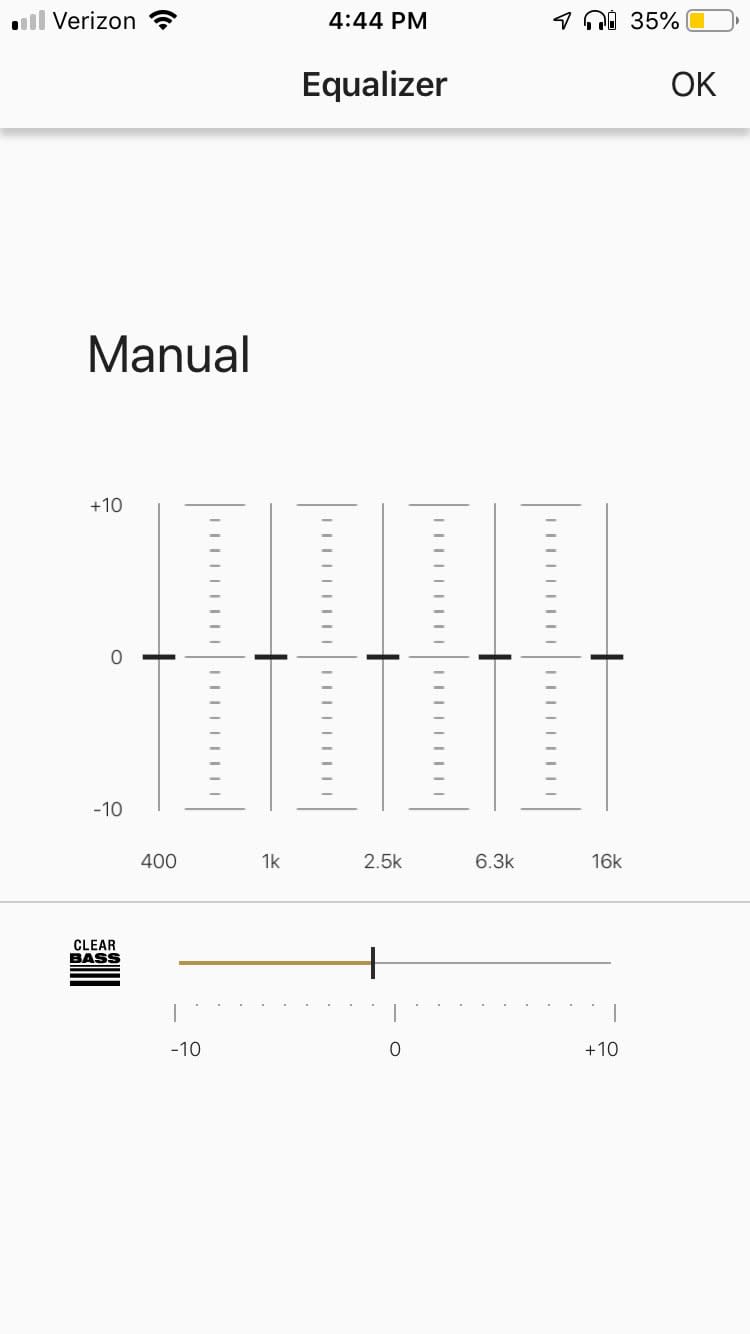
The Headphones app will also allow you to change the Adaptive Sound Control settings, turn off that DSEE HX tech and change the function of the buttons on each earbud. However, your options are super limited there. You can choose between playback controls (play/pause and skipping tracks), Ambient Sound modes (on, off, noise-canceling) and Google Assistant. That's it. I found it best to have playback controls on one side with the Ambient Sound options on the other. And no, there's no option for onboard volume control. It's my main gripe with the WF-1000XM3. Every time you want to change the volume, you have to grab your phone or reach for your laptop. There is, however, a "quick attention mode" that's super handy. If you cover the left earbud with your hand, the music reduces to a low hum so you can hear what's going on around you. This is also available on Sony's XB900N headphones.
In addition to improved ANC and audio, Sony built a new Bluetooth chip for the WF-1000XM3. In addition to the usual connectivity improvements, sound is transmitted to both earbuds simultaneously, rather than beamed to one and then from that one to the other. Indeed, the Bluetooth is reliable, and I never experienced any dropouts. Ditto for video: not once did I encounter a time where the audio didn't sync up with the visuals.
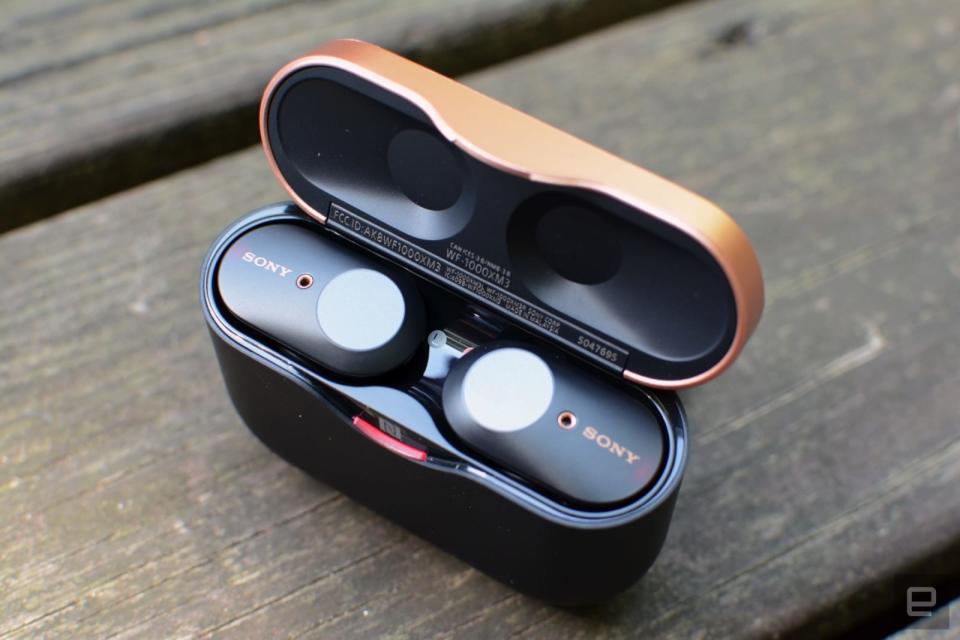
Battery life is another area Sony bests much, if not all, of the competition. The company claims the WF-1000XM3 will last six hours on a charge with ANC turned on, or eight hours with noise-canceling off. I had no problems hitting that mark, and the included charging case helps keep the buds topped off. The case is larger than a lot of the ones I've seen, and it won't fit in your pocket most likely. Despite the added bulk, it does offer three additional charges or an extra 18 hours of total listening time. There's also a quick-charge feature that will give you 90 minutes of listening after 10 minutes. Handy if you drain them at the office and need to block out your commute with a podcast.
But it's worth noting, the design isn't for everyone. The buds stick out of your ear quite a bit, and they're larger than Sony's previous true-wireless models -- like the WF-SP700N. Unlike that sporty option, the company ditched the fin. Instead, there's a hump right under the tip that helps them stay in place. Despite the extra heft on the outside, the WF-1000XM3 stays put for the most part, once you find the perfect-sized tips for your ears. Still, these look like you're wearing two Bluetooth headsets -- like you're someone super important ... from 2006. If you're hoping to be discreet with your true-wireless earbud choice, these probably aren't the best option.
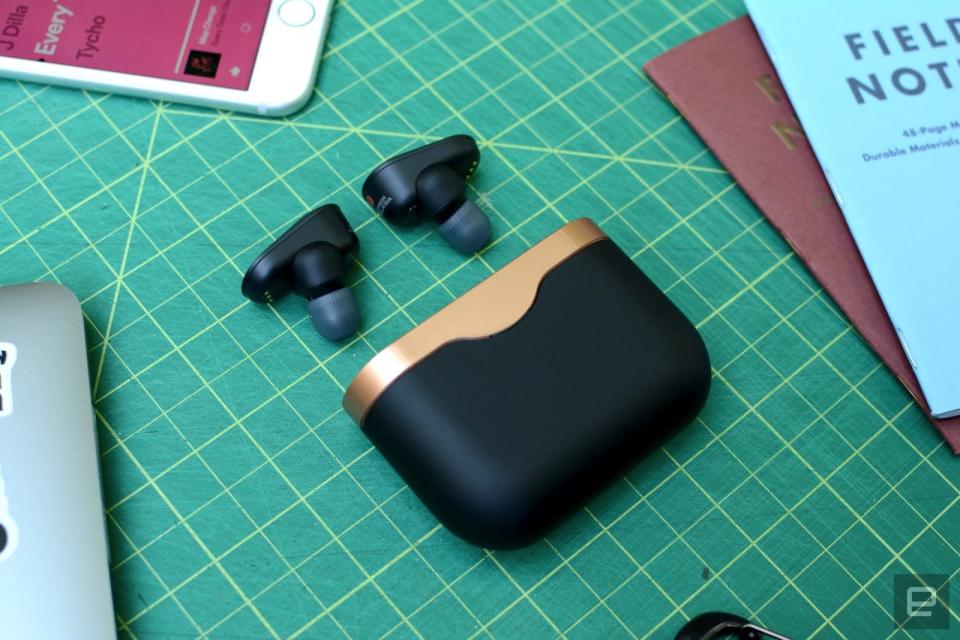
In terms of alternatives, Sennheiser is probably the closest sound-wise, but I found the Momentum True Wireless frustrating to use, especially the onboard controls. Plus, it costs $300. I also really like the sound of Master & Dynamic's MW07, but they're still $299, and the battery life isn't great. Honestly, with Sony coming in at $70 or less than a lot of "flagship" true-wireless earbuds, it's hard to recommend any of the alternatives. But hey, they're out there if you need to shop around. Sony has a super compelling package, and it's better than the pricier options. The only reason to consider something else is if you want to take your buds to the gym. And in that case, the PowerBeats Pro are the best-sounding alternative that won't buckle when they get sweaty.
With the WF-1000XM3, Sony has brought its true-wireless earbuds up to the level of its best-in-class headphones. Powerful noise-cancellation, improved Ambient Sound mode and incredible sound quality make these the best option under $300. And really, they're probably your best bet at any price.


